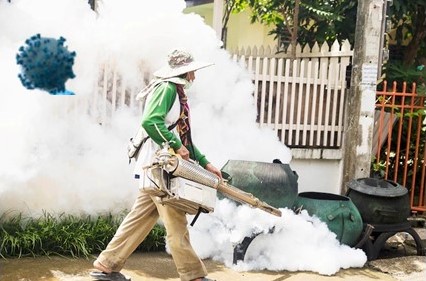Malaria and COVID-19 in native communities of Amazonas, Peru
Malaria y COVID-19 en comunidades nativas de Amazonas, Perú
DOI:
https://doi.org/10.25176/RFMH.v22i3.5044Keywords:
Malaria, COVID-19, Tropical Disease, SyndemicAbstract
Introduction In recent years, the number of malaria cases in native communities from Condorcanqui, Amazonas has considerably increased. Plasmodium vivax malaria is endemic in the region and the re-introduction of P. falciparum was reported in 2019.
Methods Here, we compiled and analyzed malaria and COVID-19 data reported by the Regional Direction of Health (DIRESA) during the 2020. Additionally, we performed an odds ratio analysis to evaluate significant associations between COVID-19 symptoms and previous malaria infections.
Results In 2020, 1547 malaria (97% were P. vivax) and 5968 COVID-19 cases were reported. Furthermore, 96 patients got COVID-19 after getting a malaria infection. From these, 87 were symptomatic (90.6%), and mostly adults, ages 30 to 59 (62.3%). Also, we found that malaria previous infections represent a risk for the presence of symptoms such as fever, cough, throat pain, and respiratory difficulty. Nevertheless, there was no significant association between these cases and hospitalization or death.
Conclusion Our analysis suggests that previous malaria infections might affect COVID-19 symptomatology, which highlights the importance of a continuing control and surveillance malaria program to avoid potential syndemics with COVID-19.
Downloads

Downloads
Published
How to Cite
Issue
Section
License
Copyright (c) 2022 Revista de la Facultad de Medicina Humana

This work is licensed under a Creative Commons Attribution 4.0 International License.



































